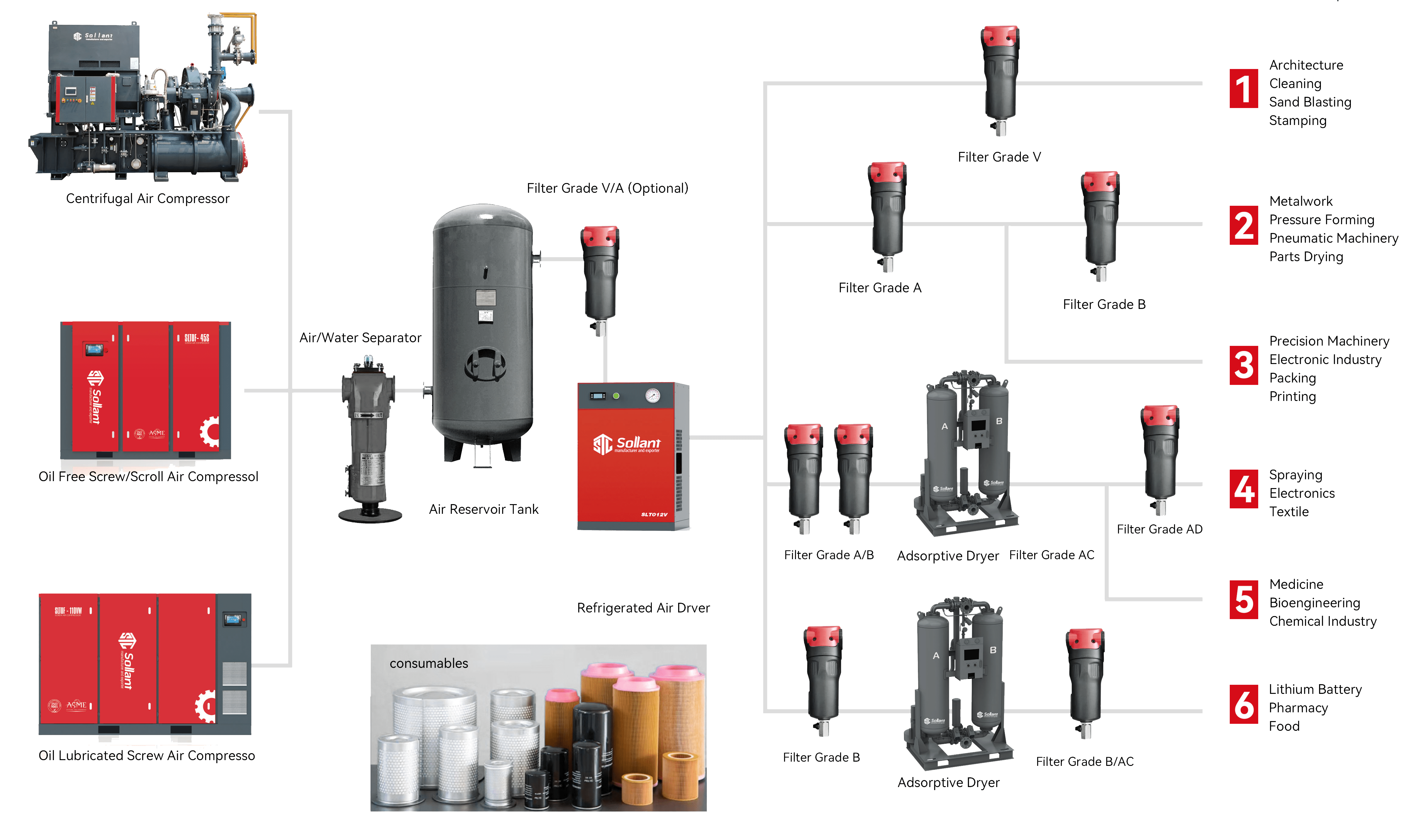Adsorption Dryer
- Home
- Adsorption Dryer
What are compressed air dryers for?
Compressed air dryers are used to remove moisture and humidity from compressed air. They play a critical role in various industrial and commercial applications where the quality of compressed air is essential. Here are some key purposes and applications of compressed air dryers:
- Preventing Equipment Damage: Excess moisture in compressed air can lead to corrosion and damage to pneumatic tools and equipment. Air dryers help protect these valuable assets by reducing the risk of moisture-related wear and tear.
- Ensuring Product Quality: In industries like food and beverage, pharmaceuticals, and electronics, where contamination-free air is crucial, air dryers help maintain the required air quality standards. Moisture in compressed air can introduce impurities, compromising product quality and safety.
- Enhancing Efficiency: Dry air is more efficient in powering pneumatic tools and machinery. By eliminating moisture, air dryers help optimize the performance and longevity of these systems.
- Reducing Maintenance: Moisture can lead to corrosion, blockages, and premature wear in compressed air systems. Air dryers lower maintenance requirements and extend the lifespan of equipment, reducing downtime and repair costs.
There are several types of air dryers available, including refrigerated air dryers, desiccant air dryers, and membrane air dryers, each suited to different applications and moisture removal requirements. The choice of air dryer depends on the specific needs of the industry or application in question.
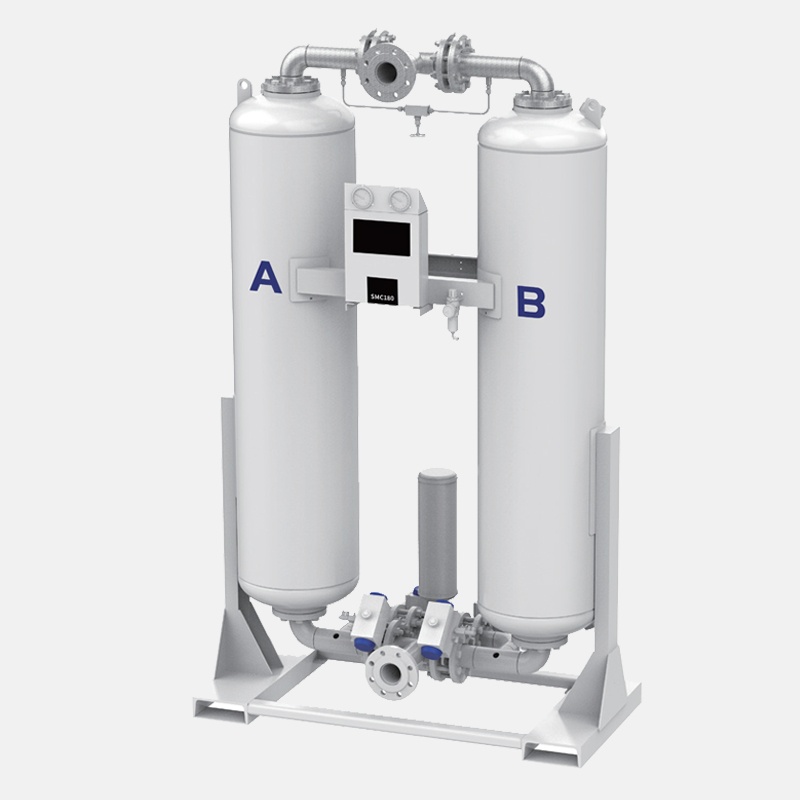
Portable Diesel Air Compressor
Model:SLTDP Series
Power:34.6-522KW
Pressure:7-35 bar
Flow:4.0-46.38M3/Min
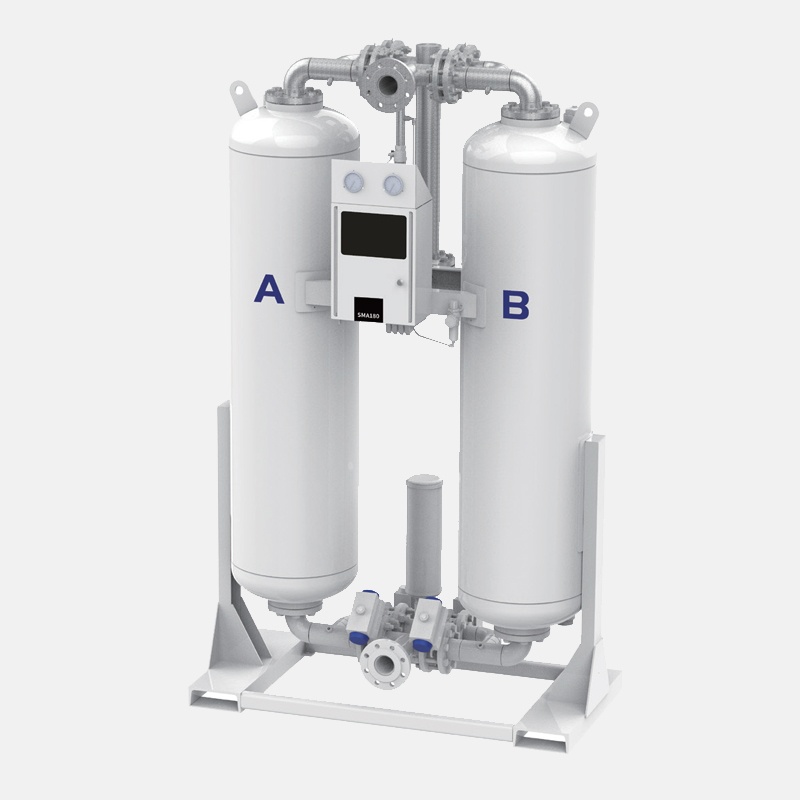
Portable Electric Air Compressor
Model:SLTEP Series
Power:22-355KW
Pressure:6-20bar
Flow:3.8-70M3/Min
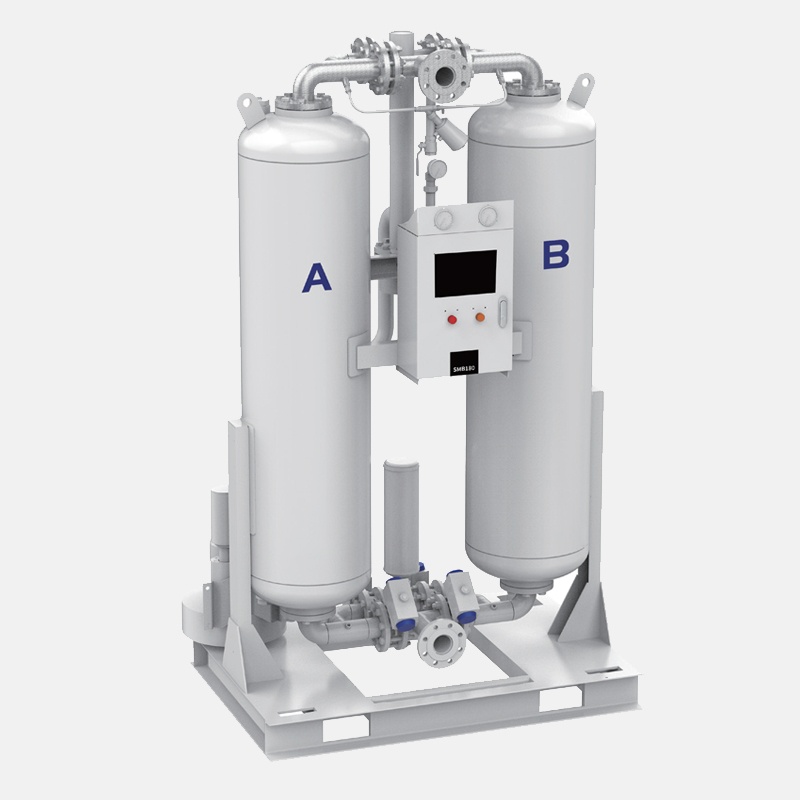
Diesel Stationary Air Compressor
Model:SLTDS Series
Power:34.6-522KW
Pressure:7-35 bar
Flow:4.0-46.38M3/Min
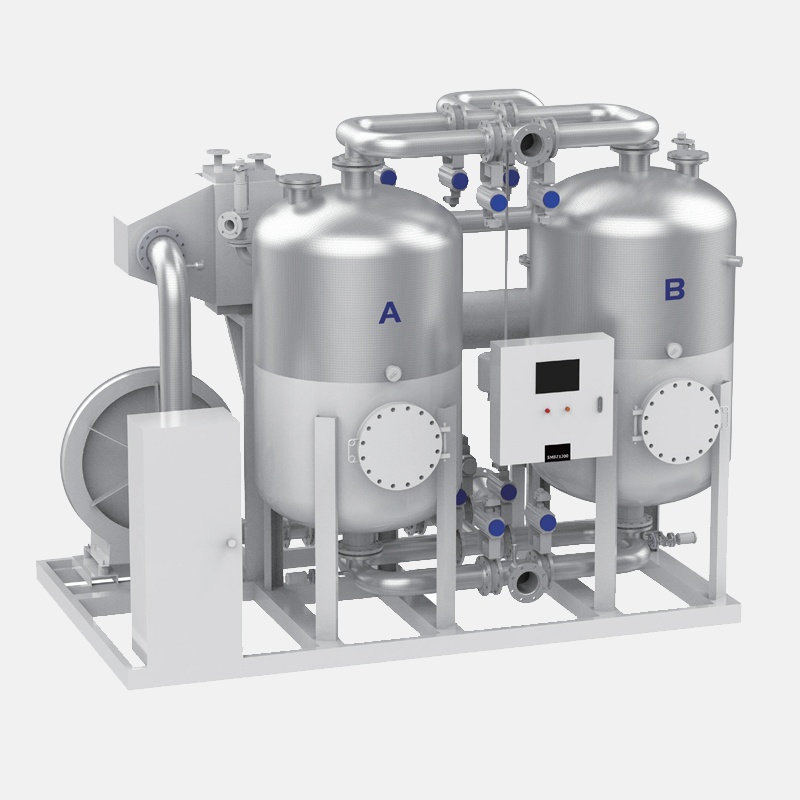
Electric Stationary Air Compressor
Model:SLTES Series
Power:22-355KW
Pressure:6-20bar
Flow:3.8-70M3/Min
Is your compressed air clean?
The atmosphere naturally contains several impurities such as dust, various forms of carbon dioxide, hydrogen compounds and water in the form of humidity.
Once sucked into the compressor, these impurities are compressed and sent along the pipeline along with the oil particles. These contaminants interact to produce abrasive and corrosive effects that can cause wear of downstream equipment or form corrosive emulsions.
Sollant has developed a range of premium air solutions to ensure professional air quality. Increase efficiency and productivity and extend the life of equipment and tools. The quality of compressed air is of paramount importance to users. If air laden with contaminants comes into contact with the final product, the cost of rejecting the final product can be unacceptably high, and the cheapest option for producing a product can become prohibitively expensive.

Compressed air quality grade standard – ISO 8573-1:2010
ISO 8573-1:2010 is an international standard that defines compressed air quality grades and specifies the maximum allowable levels of various contaminants in compressed air systems. The standard was developed to ensure that compressed air used in various industrial applications meets specific quality standards. ISO 8573-1:2010 categorizes compressed air quality into different classes, each representing the acceptable limits for various contaminants.

Installation
